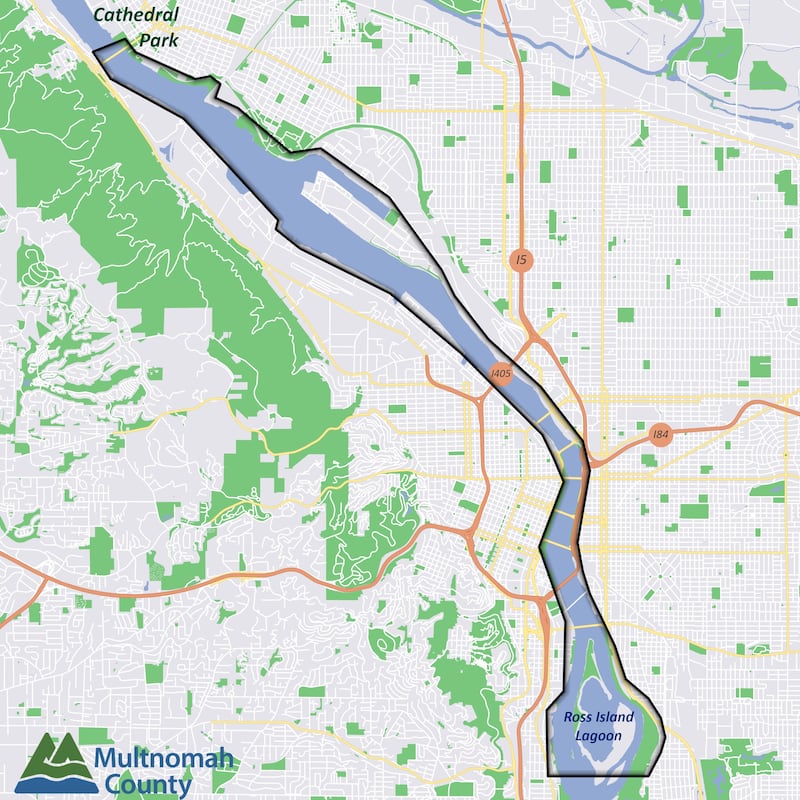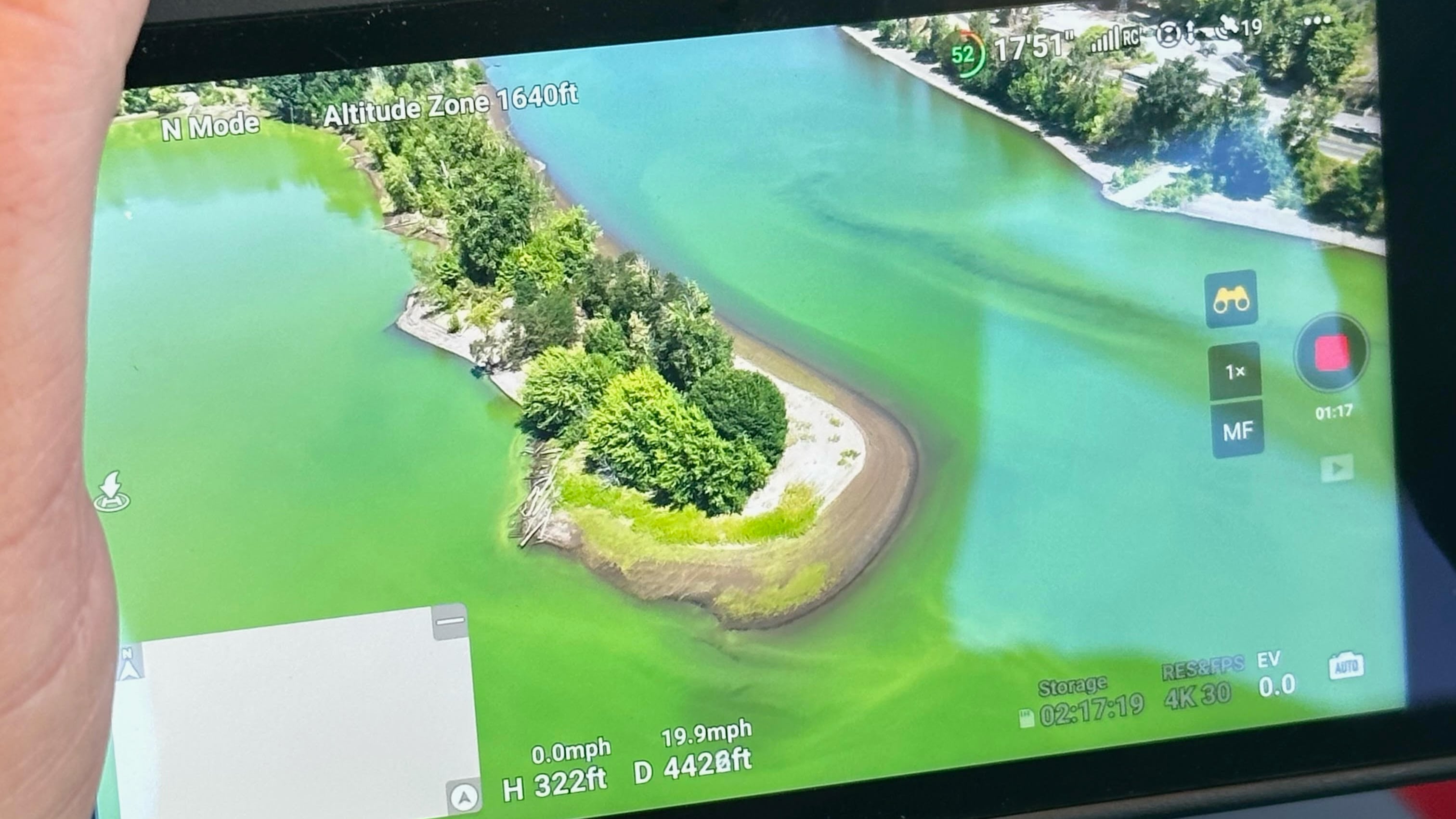The toxic algae bloom that started in Ross Island Lagoon has now spread down the Willamette River from Sellwood to Cathedral Park, rendering roughly 11 miles of the river unsafe for recreation on the hottest days of the year.
The bloom has turned the river a neon green, as if it had been dyed for St. Patrick’s Day. Instead, it is a blue-green algae filled with a liver toxin that is dangerous to swallow or inhale. The algae is especially dangerous to children, and potentially deadly for dogs.
The Oregon Health Authority announced the expanded boundaries of the bloom Tuesday evening.

Some of the slime can be traced to Ross Island Lagoon, which for decades was used by a subsidiary of R.B. Pamplin Corp. to mine gravel. The deep, stagnant lagoon is now an incubator for algae when the weather warms.
The state of Oregon is overseeing the restoration of the gravel pit. That project is the subject of a lawsuit that the Northwest Environmental Defense Center filed in April against OHA, alleging the agency failed to require Ross Island Sand & Gravel to maintain water quality while finishing the work.
Representatives of R.B. Pamplin Corp. did not immediately respond to a request for comment.
Willie Levenson, ringleader of the Human Access Project, spent years encouraging Portlanders to swim in the Willamette River with events like the Big Float. Predictably, he’s livid at the toxic conditions now spreading downstream.
“The bloom is a result of climate change but more so the hydrology of Ross Island Lagoon,” he tells WW. “The Ross Island Lagoon is a harmful cyanobacteria bloom factory, a pond inside of a river with virtually no water circulation. This is a solvable problem.”
Another bloom site in the river is downstream, at a North Portland beach called Willamette Cove. Travis Williams of Willamette Riverkeeper says Ross Island Lagoon is one of several compounding issues in the river.
“While the lagoon has its issues, this year the algae showed up downriver first, which was interesting,” Williams says. “There are other areas of the Willamette that have some similar attributes that can foster the bloom of blue-green algae, and Willamette Cove is one. There are other areas as well with little current, significant depth, and little water movement in the hottest stretches of the summer.”
Williams notes that by the time the Willamette reaches Portland, it has traveled more than 150 miles and carries the drainage of a 12,000-square-mile valley filled with towns and farms. “Also, climate change is the newer catalyst taking all of those conditions and making algal blooms occur more broadly, and perhaps with greater intensity,” he says. “It is just the icing on a very problematic cake.”
Meanwhile, temperatures in Portland are expected to reach 100 degrees for the third consecutive day. The National Weather Service predicts a slight cooling Thursday, followed by much cooler temperatures on Friday and the weekend.
Multnomah County officials this afternoon announced they suspect a second death was caused by the heat. The person, who was not identified, died at a Portland hospital. Like the first casualty, they were found in Southeast Portland, though county officials offered no details.
Cooling centers can be found here.

